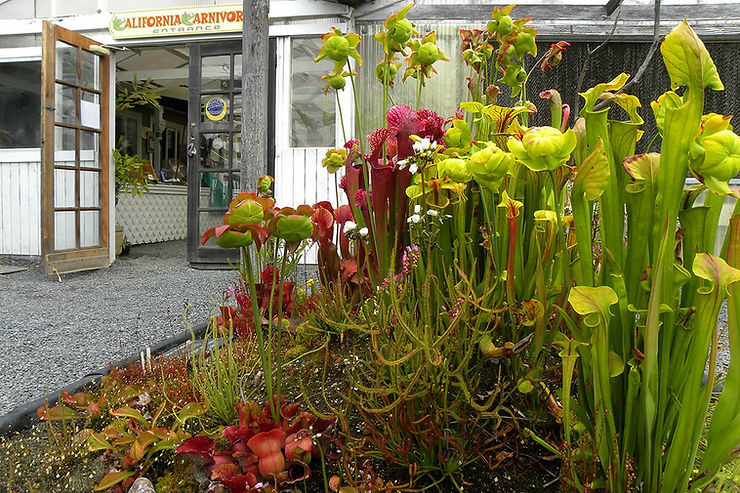By: Ada Xin
Carnivorous plants are plants with sticky leaves, slippery tubes, and hairy snap traps. Their unique structure allows them to lure insects, catch animal poop, and sometimes draw in an occasional small bird or mammal. In the Mario Bros movie, the Piranha Plants hope to make a snack of the famous plumber, and in the movie Little Shop of Horrors a gigantic plant needs human blood to grow. However, what would it take for a carnivorous plant to eat a human?
One type of carnivorous plant is the pitcher plant. It has tube-shaped leaves and uses sweet nectar to lure insects in. Kadeem Gilbert is a botanist at Michigan State University and studies tropical pitcher plants: “You could get a really tall, deep pitcher that would be effective as a pitfall trap for larger animals,” he says (Science News Explorers, June 14, 2023).
The pitcher plant also has a slippery coating on its lips. Insects and some small mammals slide into the bottom of the tube where they meet the digestive enzymes. These enzymes break down the animal’s tissue into nutrients the plant absorbs.
Pitcher plants are not equipped to eat mammals regularly, though. Large species of carnivorous plants may trap small mammals like rodents and tree shrews, but small species of pitcher plants mainly eat insects and arthropods, which are spineless animals like insects, spiders, and crustaceans. Most pitcher plants are probably after the mammal’s poop, Gilbert says (Science News Explorers, June 14, 2023). The plants catch the predigested meals. It takes less energy to digest a piece of poop than to digest an insect.
Another type of carnivorous plant is the Venus flytrap. The flytrap has jaw-like leaves with tiny hairs that are triggered when an insect lands on them. The leaves snap shut when triggered and digest the meal. The Venus flytrap uses great amounts of energy to snap the leaves shut, and more energy to produce enzymes used in digestion. A giant flytrap would need massive amounts of energy to digest a human.
Barry Rice studies carnivorous plants at the University of California in Davis. He says all plants are made of cells, and these carnivorous plants have cell lined rigid walls. This gives the plant structure, but it makes it hard to bend around. The small snap-traps of a Venus flytrap are not affected by the hardness of the rigid walls. They can easily catch an insect. A large flytrap would be much harder to move around. “You’d have to make it a pitfall trap,” Rice says.
Barry Rice says a massive pitcher plant would be like a giant hole in the ground, waiting for a careless human to walk straight in and be digested by the acids in the plant. Yet, digesting a human might be more than it is worth. The extra nutrients from the prey would promote growth of bacteria.
Also, if the plant takes too long to digest, the corpse may begin to rot. The bacteria can also infect the plant and cause it to rot, too. “The plant’s got to be able to make sure it can take those nutrients out of there,” says Rice. “Otherwise, you’re gonna get a compost pile.”
Further, plants and flytraps might offer too much of a chance to escape. A human might be able to punch a hole and drain out the liquid of a pitcher plant or cut a Venus flytrap to get out. Another type of carnivorous plant, a sticky sundew, uses glue-like traps to trap its prey. It might be the best way of trapping a human, states Adam Cross, a restoration ecologist at Curtin University in Bentley, Australia. “The more you struggled, the more you would become enmeshed and the more your arms would be unable to function properly,” says Cross. The sundew would trap a human through exhaustion.
However, the sundew would have to lure the human in. Cross recommends nutritious fruits or reliable water: “I think that’s the way to do it,” says Cross. “Bring them in with something tasty, and then munch on them yourself.”
Sources: https://eb18600f7bb2916037f5ee8e636ce199.cdn.bubble.io/f1687116080387x349353687835276520/Could%20a%20plant%20ever%20eat%20a%20person_.pdf











